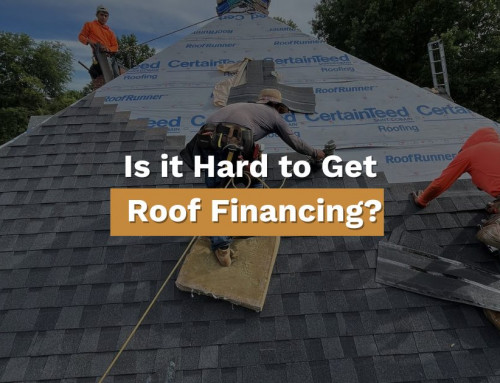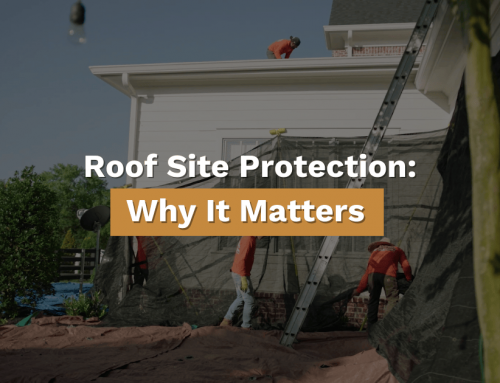
What you will find in this article: The article highlights how bad weather can damage commercial roofs through leaks, structural issues, and material deterioration. Heavy rain, wind, hail, snow, and extreme heat are key threats. Regular inspections, proper drainage, quality materials, and professional maintenance help prevent weather-related damage and extend the roof’s lifespan.
Maintaining your commercial property’s roof ensures its longevity and structural integrity. A clean roof looks better and functions more effectively, preventing damage and reducing the need for costly repairs. Regular maintenance is essential for preserving the roof’s integrity and enhancing longevity. Also, cleaning flat roofs is important to remove debris and moisture, preventing rust and surface blistering damage. In this blog post, we’ll explore the best cleaning methods for commercial buildings, helping you keep your roof in top condition.
Why Roof Cleaning is Important
Before diving into the cleaning methods, it’s important to understand why cleaning is essential for commercial properties:
-
Extended Life: Regular cleaning removes debris, algae, moss, and mold that can deteriorate roofing materials, thus extending the lifespan of your roof.
-
Prevents Damage: Accumulated dirt and organic growth can trap moisture, leading to leaks and structural damage.
-
Improves Energy Efficiency: A clean roof reflects more sunlight, reducing heat absorption and lowering cooling costs. Additionally, maintaining a clean roof can significantly lower the roof temperature, enhancing energy efficiency and durability.
-
Enhances Aesthetic Appeal: A well-maintained roof contributes to the overall appearance and professionalism of your property.
-
Removes excessive roof weight: The overall weight-bearing maximum, or load capacity, is crucial for ensuring your roof can safely support the combined weight of roofing materials, equipment, snow, and any additional loads without risking structural damage or collapse.
-
A clean roof also supports rooftop HVAC systems by reducing the roof temperature, allowing the cooling units to draw cool air quickly, with lower energy consumption.
Top Roof Cleaning Methods
1. Pressure Washing
Method: Uses high-pressure water to remove dirt, algae, and debris.
-
Pros:
-
Highly effective at removing stubborn stains and debris.
-
Quick and efficient for large areas.
-
Cons:
-
Can damage roofing materials if not done correctly.
-
Not suitable for all types, particularly older or more fragile materials.
Pressure washing is a common method for cleaning various surfaces, but certain types of commercial roofing should not be pressure washed due to the risk of damage. Here are the types of commercial roofs that should generally not be pressure washed:
-
EPDM Roofing (Ethylene Propylene Diene Monomer):
-
Why Not: EPDM is a rubber membrane that can be easily damaged by high-pressure water. The force of the water can cause punctures, tears, and can strip away the adhesive at seams and flashings.
-
TPO Roofing (Thermoplastic Polyolefin):
-
Why Not: While TPO is a durable material, pressure washing can damage the surface, especially at seams and flashings, leading to potential leaks. The force can also weaken the membrane over time.
-
PVC Roofing (Polyvinyl Chloride):
-
Why Not: Similar to TPO, PVC membranes can be compromised by pressure washing, particularly at seams and around flashings. The high pressure can cause punctures or weaken the material, reducing its lifespan.
-
Modified Bitumen Roofing:
-
Why Not: The granules on modified bitumen roofs can be dislodged by high-pressure water, which compromises the protective surface. This can lead to accelerated aging and increased vulnerability to UV damage.
-
Built-Up Roofing (BUR):
-
Why Not: BUR systems have multiple layers of asphalt and gravel. The gravel layer can be dislodged or shifted by pressure washing, which reduces the roof’s ability to protect against UV radiation and physical damage.
-
Spray Polyurethane Foam (SPF) Roofing:
-
Why Not: SPF roofs have a foam layer that can be damaged by high-pressure water, especially if the protective coating is thin or worn. The pressure can erode the foam, leading to leaks and other issues.
For these types of roofs, it’s better to use alternative cleaning methods, such as low-pressure washing, soft washing, or manual cleaning, to avoid causing damage. Always consult with the roofing manufacturer or a professional roofer for the best cleaning practices specific to your roof type.
2. Soft Washing
Method: Utilizes low-pressure water combined with specialized cleaning solutions to gently clean.
-
Pros:
-
Safe for all types, including shingles and tiles.
-
Effectively kills algae, moss, and mold without damaging exterior.
-
Cons:
-
May require more time to show results compared to pressure washing.
-
Cleaning solutions need to be environmentally friendly to avoid harm to surrounding vegetation.
3. Chemical Cleaning
Method: Involves applying chemical solutions that break down and remove dirt, algae, and moss.
-
Pros:
-
Highly effective at removing organic growth.
-
Long-lasting results as chemicals often include inhibitors to prevent regrowth.
-
Cons:
-
Potential environmental impact if chemicals are not properly managed.
-
Requires professional application to ensure safety and effectiveness.
4. Manual Cleaning
Method: Uses brushes, scrapers, and other tools to physically remove debris and growth.
-
Pros:
-
Allows for detailed and targeted cleaning.
-
No risk of damage from water pressure or chemicals.
-
Cons:
-
Labor-intensive and time-consuming.
-
May not be practical for large commercial roofs.
5. Steam Cleaning
Method: Employs hot steam to clean the surface.
-
Pros:
-
Kills mold, algae, and bacteria without the need for chemicals.
-
Effective at removing tough stains.
-
Cons:
-
Requires specialized equipment.
-
May not be suitable for all roofing materials due to the high temperature.
Choosing the Right Method for Your Roof
Selecting the best cleaning method for your commercial property depends on several factors:
-
Material: Different roofing materials respond differently to various cleaning methods. For example, asphalt shingles may be damaged by high-pressure washing, while tiles might withstand it better.
-
Level of Dirt and Growth: Heavy algae or moss growth may require chemical treatments or steam cleaning, while light dirt can often be managed with manual cleaning or soft washing.
-
Environmental Considerations: If your property is in a sensitive area, opt for eco-friendly cleaning solutions and methods that minimize environmental impact.
-
Budget and Resources: Some methods are more cost-effective than others. Consider your budget and whether you need professional help for the cleaning process.
Conclusion
Regular cleaning is a vital part of maintaining your commercial property. By choosing the appropriate cleaning method, you can ensure your roof remains in excellent condition, preventing damage and prolonging its lifespan. Whether you opt for pressure washing, soft washing, chemical cleaning, manual cleaning, or steam cleaning, each method has its advantages and is suited to different types of roofs and cleaning needs.
Importance of Commercial Roof Cleaning Services
Commercial roof cleaning services are essential for maintaining the integrity and longevity of a commercial building’s roof. A clean roof not only enhances the aesthetic appeal of the building but also ensures the safety and well-being of its occupants. Regular cleaning can help cut down on repairs, extend the lifespan of the roofing system, and reduce energy consumption. Moreover, a cleaning can also improve the overall performance of the building’s HVAC systems and prevent the growth of mold and mildew. By investing in cleaning services, you can ensure that your roof remains in optimal condition, safeguarding your property and its occupants.
Choosing the Right Roof Cleaning Method
Choosing the right cleaning method is crucial to ensure the effectiveness and safety of the cleaning process. Cleaning companies use various methods, including high-pressure jet-washing, low-pressure steam jets, blast cleaning, and hand washing. The choice of method depends on the type of dirt and grime accumulated on the roof, as well as the roofing material. For example, high-pressure jet-washing is suitable for metal roofing, while low-pressure steam jets are better suited for flat roofs. It’s essential to consult with professionals to determine the best cleaning method. Their expertise ensures that the chosen method will effectively clean without causing damage to the roofing material.
Types of Roof Cleaning Techniques
When it comes to commercial roof cleaning, professional cleaners employ several techniques to ensure a thorough and safe cleaning process. The most common techniques include:
-
High-Pressure Jet-Washing: This method uses high-pressure water jets to remove dirt, grime, and other debris from the surface. It’s highly effective for stubborn stains but may not be suitable for all roofing materials due to the risk of damage.
-
Low-Pressure Steam Jets: Utilizing low-pressure steam, this technique loosens and removes dirt and grime without harming the roofing material. It’s a gentler option compared to high-pressure washing, making it ideal for more delicate surfaces.
-
Blast Cleaning: Combining air and water, blast cleaning effectively removes dirt and grime from the roof surface. This method is versatile and can be adjusted to suit different roofing materials and levels of dirt accumulation.
-
Hand Washing: Involves manually washing the surface with a mild detergent and water. This technique allows for detailed cleaning and is particularly useful for delicate or intricate roofing materials where high-pressure methods might cause damage.
The choice of technique depends on the type of roofing material, the level of dirt and grime, and the desired level of cleaning. Consulting with professional roof cleaners can help determine the best approach for your specific roof.
Safety Precautions and Best Practices
Safety precautions and best practices are essential when it comes to roof cleaning. Roof cleaners must wear proper protective gear, including gloves, safety glasses, and harnesses. They must also ensure that the runoff from the roof cleaning project doesn’t negatively affect nearby plant life. Additionally, roof cleaners must follow the manufacturer’s instructions for cleaning and maintenance to avoid voiding the warranty. It’s also important to check the material warranty to ensure that the manufacturer doesn’t recommend professional cleaning services. Adhering to these safety measures and best practices helps protect both the workers and the integrity of the roof.
Benefits of Hiring Professional Roof Cleaning Services
Hiring roof cleaning services offers numerous benefits for commercial building owners. Professional cleaners have the necessary skills and equipment to clean commercial roofs safely and effectively. They can identify potential issues before they escalate, preventing more repairs and replacements. Moreover, roof cleaners can help extend the lifespan of the roofing system, reduce energy consumption, and improve the overall performance of the building’s HVAC systems. By hiring roof cleaning services, building owners can ensure a clean and well-maintained roof that enhances the aesthetic appeal and safety of the building. This proactive approach to roof maintenance can save time, money, and stress in the long run.
Finding the Right Roof Cleaning Company
Selecting a reputable and experienced commercial roof cleaning company is crucial for ensuring high-quality service. Here are some tips to help you find the right provider:
-
Look for Certifications: Ensure the company is certified by reputable organizations, such as the National Roofing Contractors Association (NRCA). Certifications indicate a commitment to industry standards and best practices.
-
Check Experience: Opt for companies with extensive experience in commercial roof cleaning, particularly with your type of roofing material. Experienced professionals are more likely to handle your roof with the care it requires.
-
Read Reviews: Online reviews from previous customers can provide valuable insights into the company’s reputation and service quality. Look for consistent positive feedback and any red flags in customer experiences.
-
Get Quotes: Request quotes from multiple companies to compare prices, services, and warranties. This helps ensure you get the best value for your investment.
-
Check Equipment and Safety Protocols: Ensure the company uses modern equipment and follows strict safety protocols to protect your roof and employees. Proper safety measures are essential to prevent accidents and damage during the cleaning process.
By doing your research and finding the right company, you can ensure that your roof is cleaned safely and effectively.
Factors Affecting the Cost of Roof Cleaning
The cost of roof cleaning can vary depending on several factors, including the size of the roof, the cleaning method used, and the roofing material. The cost of roof cleaning can also be affected by the location of the building, with urban areas typically having higher costs than rural areas. Additionally, the frequency of cleaning can also impact the cost, with regular cleaning sessions being more cost-effective in the long run. It’s essential to consult with professional roof cleaners to determine the best cleaning schedule and method for your roof, as well as to get a detailed estimate of the costs involved. By understanding these factors, you can make informed decisions that balance cost and effectiveness, ensuring your commercial roof remains in top condition.
Scheduling and Maintenance
Regular roof maintenance is crucial to extending the lifespan of your roof. Here are some tips for scheduling and maintaining your roof:
-
Schedule Regular Cleanings: Depending on the type of roofing material and environmental conditions, schedule regular cleanings every 6-12 months. Consistent maintenance helps prevent the buildup of dirt and organic growth.
-
Inspect Your Roof: Regularly inspect your roof for signs of damage, wear, and tear. Address any issues promptly to prevent minor problems from escalating into major repairs.
-
Keep Records: Maintain detailed records of your roof’s maintenance history, including cleaning schedules, repairs, and replacements. This documentation can be invaluable for tracking the roof’s condition and planning future maintenance.
-
Budget for Maintenance: Allocate a budget for regular maintenance and repairs to avoid costly surprises. Proactive budgeting ensures you can address issues promptly without financial strain.
-
Consider a Maintenance Contract: Signing a maintenance contract with a reputable roof cleaning company can ensure regular maintenance and priority service. Contracts often include scheduled inspections and cleanings, providing peace of mind and consistent care for your roof.
By scheduling regular maintenance and inspections, you can identify potential issues before they become major problems and extend the lifespan of your commercial roof.
Conclusion
Commercial roof cleaning is an essential part of regular roof maintenance that can help extend the lifespan of your roof, improve energy efficiency, and prevent costly repairs. By understanding the different types of roof cleaning techniques, finding the right company, and scheduling regular maintenance, you can ensure that your commercial roof remains in top condition. Remember to always prioritize safety and use reputable and experienced providers to protect your roof and employees. Regular roof maintenance is a proactive approach that saves time, money, and stress in the long run, ensuring your commercial building remains safe and efficient.




